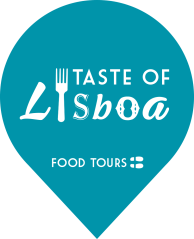The definitive guide to bread in Portugal
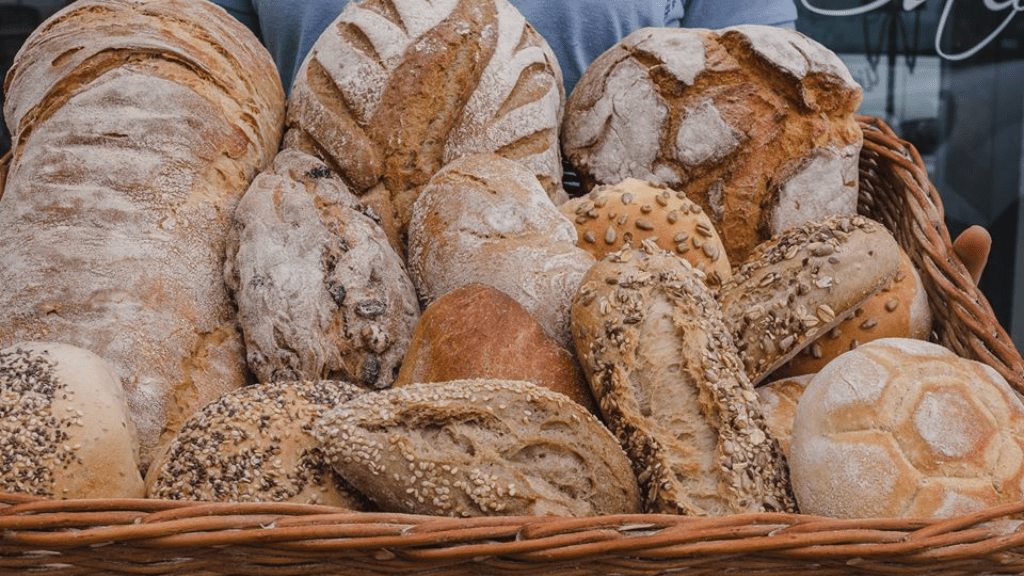
“Good bread is the most fundamentally satisfying of all foods; and good bread with fresh butter, the greatest of feasts.” James Beard
American chef and cookbook author James Beard proclaimed his love for bread on the quote above and we couldn’t agree more! 16th of October is World Bread Day, a date which officially commemorates the anniversary of the creation of the Food and Agriculture Organization of the United Nations (FAO) but that also feels like a great excuse to dig into the world of Portuguese bread with one piece of well-buttered toast in hand.

Exploring a country via its regional breads is a way of understanding the history of the different parts of the nation geographically speaking, as well as acknowledging the topographic characteristics of a given area. Looking at Portugal at a glance, it’s easy to realize why dark rye is the staple in the rough mountainous area of Trás-os-Montes up north, while broa made with corn is typical in verdant Minho, known for its rainfall. In the center and south of the country, namely in the Alentejo which is known as “Portugal’s breadbasket” region, seemingly endless fields of wheat are at the origin of the much beloved pão Alentejano, while in the bottom south of the country, somewhat exotic ingredients like carob also make an appearance in regional baked goods.
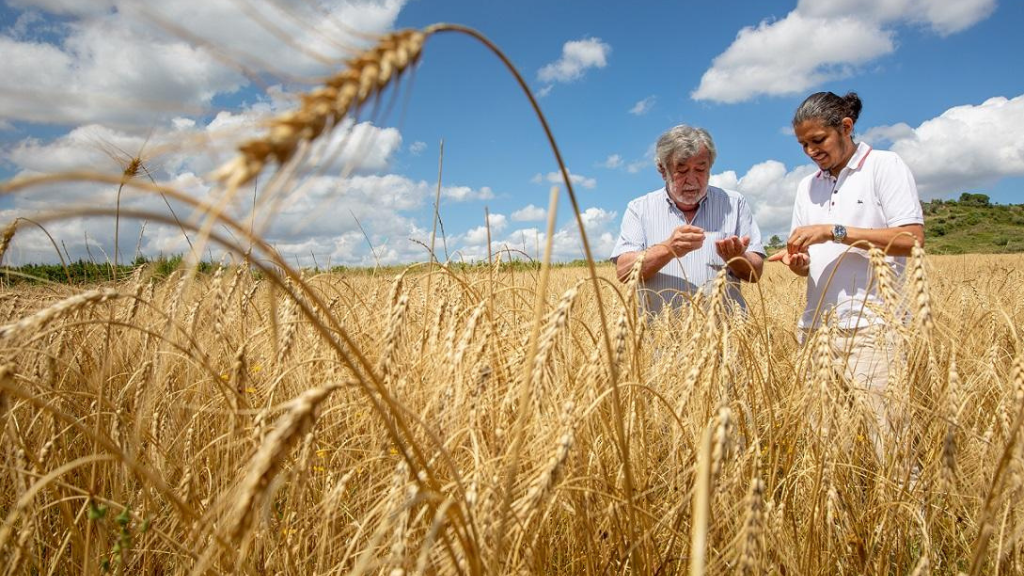
Bread is one of the main sources of carbohydrates for the average Portuguese person. We eat it for breakfast, as a side during lunch and dinner, and in the shape of toasts and sandwiches as a mid morning or afternoon snack. It’s so important in our food culture, that in the region of Serra da Estrela, famed for its buttery sheep milk cheese, there’s even a museum dedicated to Portuguese bread.
Besides being eaten on its own, bread is also the base of many Portuguese recipes which, following the ethical but also economic principle of avoiding food waste, make good use of stale bread transforming it into tasty and nourishing dishes.
If you get to travel around Portugal, take it as an opportunity to taste the most popular Portuguese bread varieties:
Regional breads of Portugal
Even though nowadays you can virtually find most of these breads all over the country, some of them are most frequently eaten in a given region, namely at their place of origin. It happens to be like that because of tradition which was enforced back in the day by the availability or lack of ingredients, as well as the fact that over history natives have developed a taste for their local styles of bread, often getting used to how the starch pairs with their typical dishes.
Papo seco or carcaça | Portuguese wheat bun
We start with the most obvious bread choice all over Portugal, which is often simply translated to English as portuguese bun. Even though we do have several kinds of rolls, specially now-a-days when modern bakeries will diverge from the usual recipes from back in the day featuring things like multigrain (sementes), whole wheat (integral) or a mix of wheat and rye flours (mistura) instead of the most straightforward refined versions, carcaças could still be considered Portugal’s go-to bread. Also known as papo-seco or bola de água, carcaça is a classic white bread roll which is often eaten for breakfast with butter (pão com manteiga) or with a filling of ham and cheese (sandes mista). A papo-seco bread is very light weight wise, with airy crumb on the inside and flaky slightly crusty outside. While it may seem like there’s nothing spectacular about this kind of bun, ask many Portuguese people and they will tell you that eating a papo-seco with butter invokes not only nostalgia but also a certain sense of homely comfort. This type of standard bread may also come under the names bijou, viana, vianinha or molete, even though this may mean that a very similar dough is shaped differently, perhaps giving preference to a rounder form.
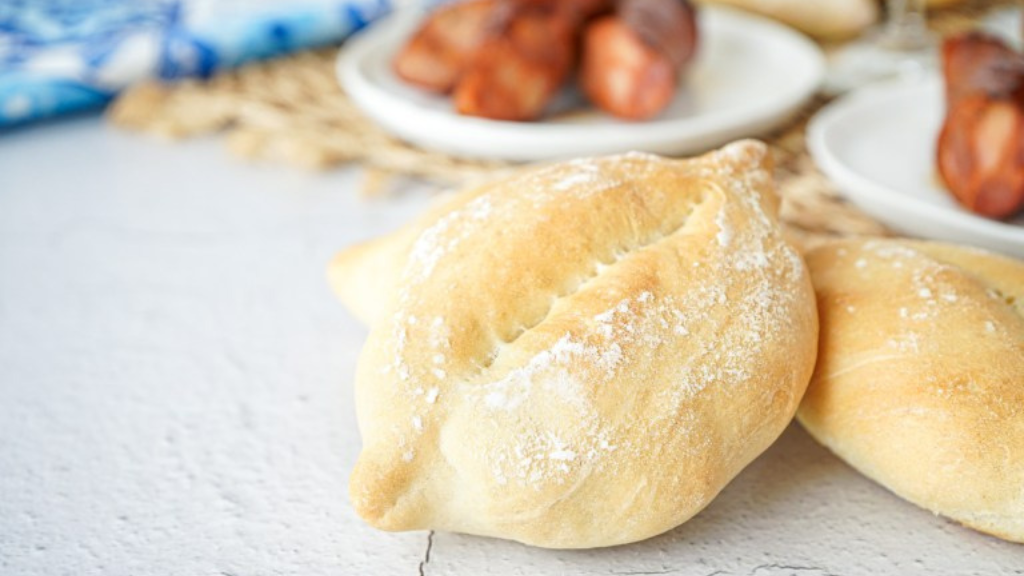
Broa de milho | corn bread
Even though broa is translated as corn bread, and even often referred to in Portuguese as corn broa, it’s relevant to note that this popular bread from the Minho and Beira Alta regions is made with a mix of corn and wheat flours – those following a gluten-free diet may want to look into different options. Before corn was brought into Europe during the Age of Explorations in the 15th century, broa was typically made with rye flour. Now-a-days, when you say broa, this is synonymous with a robust corn loaf, which can be white or yellow depending on the type of corn used for the making of the dough. This is one of the oldest types of bread still being made in Portugal, and its origins are believed to go as far as the time of the Visigoths in the Iberian Peninsula, around the 5th century. Because political borders are a man-made construct and crops don’t care about such designations, a similar type of cornbread is also popular in the Spanish region of Galicia which borders Northern Portugal. It there goes by the name pan de millo or broa de millo. In Portugal, broa is not the type of bread you’d use for breakfast or sandwiches. Instead, it is best enjoyed as a complement to meals, and it is believed to be the perfect pairing for a hot bowl of caldo verde soup. Just like it can happen with other varieties of bread, broa is sometimes still prepared in a woodfire oven (forno de lenha), giving it an even more rustic and unique taste which lovers of smoked foods will certainly appreciate.
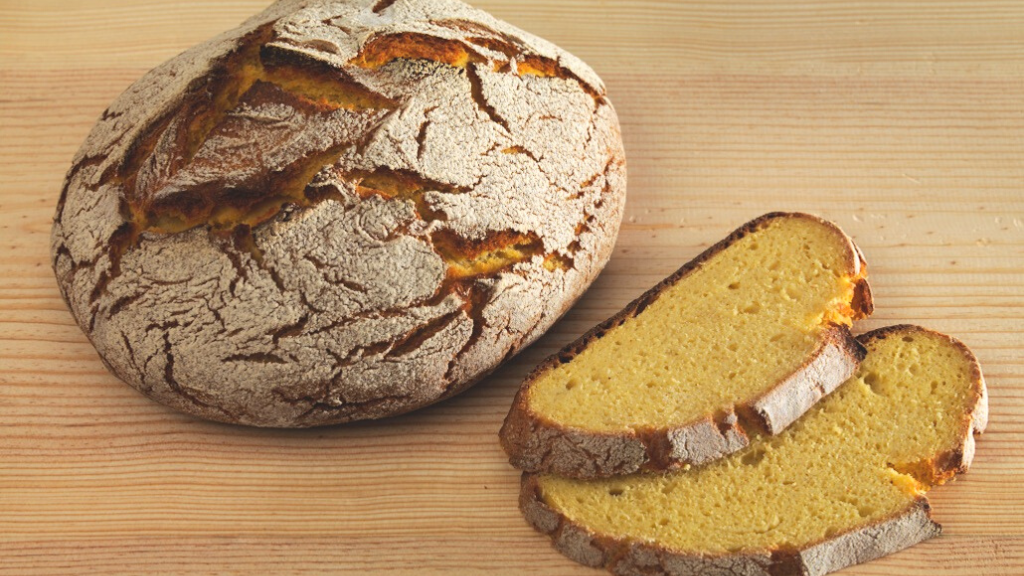
Broa de Avintes | malted corn and rye bread
Avintes is a locality in Vila Nova de Gaia, a neighbor of the city of Porto up north, which is lucky enough to have its own variety of corn bread. Broa de Avintes, that is cornbread from Avintes, is a traditional dense and rich bread with a distinct shape and dark color. Instead of blending corn and wheat such as the broa we speak about above, the dough for broa de Avintes mixes white corn, rye and malt. Considering the shape of this bread and its usual size, the crumb ends up being dense and a little moist, with a pronounced sweet and sour flavor profile. Broa de Avintes can go from 1kg to 9kg, and it is usually eaten sliced with soup or with petiscos like cured meats and grilled sardines. Being a richer type of baked good, which is still cooked inside a wood oven, this is not your everyday type of bread. Instead, you will find broa de Avintes on the table during festive meals, such as Christmas. Every August since 1988 Gaia hosts Festa da Broa, a gastronomic festival dedicated to broa de Avintes, in which visitors can taste the bread itself, but also chefs de cuisine’s creations involving broa in the recipe.
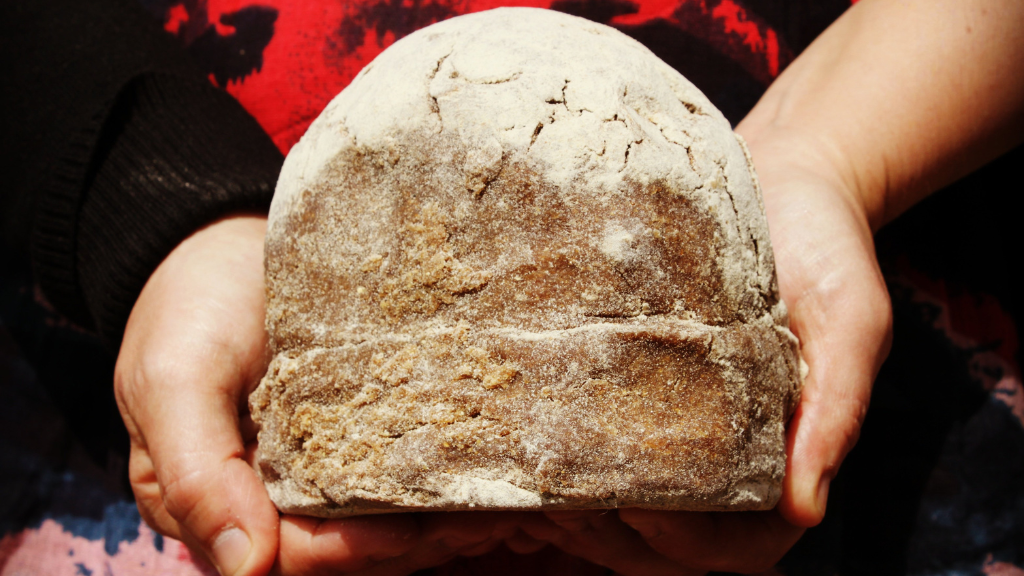
Regueifa | round wheat bread
Thanks to its characteristic round shape, it’s easy to spot a regueifa. This typical bread from the north of the country draws inspiration from Spanish bread, featuring a light spongy crumb and crispy yet not particularly thick crust that will leave a trail of crumbs behind when you pull apart a piece of regueifa with your hands. Dough and consistency wise, there’s also cacete, which is a similar bread but in this case shaped like a thicker baguette. Around Christmas time, you will easily come across cacetes in the north, where bakeries that do not necessarily prepare this type of loaf year round do stock it coming December, as the slices of this bread are typically used to prepare rabanadas, the Portuguese take on French toast eaten as one of our typical Christmas desserts. Regueifa is also not your day to day bread but, instead, more like a days gone by type of loaf still prepared during popular festivities or on Sunday, justifying its other name pão domingueiro. You may come across regueifa in the Minho and Douro regions and, at the most in Central Portugal, but it is very rarely found around Lisbon or the south of the country. Regular regueifa is not to be mistaken with regueifa doce, that is, sweet round breads, which have similar appearance but present a richer sweet dough, which resembles Easter folar, with the spiced cents of cinnamon and/or anise. Regueifa is a bread full is symbolism as, back in the day, godparents would gift loaves to their godchildren who, living in a time of scarcity, would proudly wear regueifas around their necks as if they were a necklace, to celebrate the festivities of Easter and the fact that, for once, this was a time for feasting.
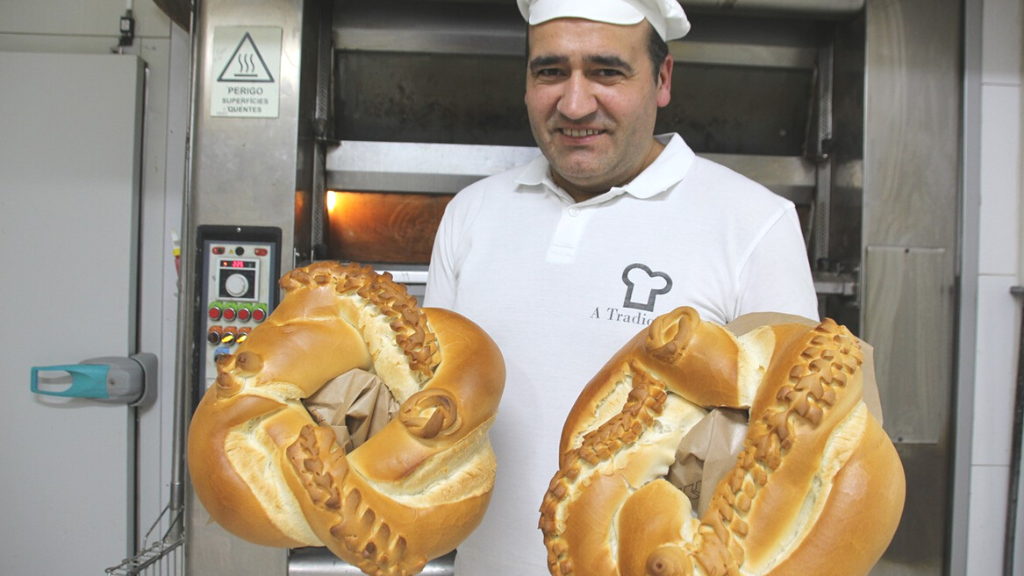
Pão de centeio | rye bread
As the interior north of Portugal, the region which goes by the name of Trás-os-Montes, is notorious for its mountains and rugged terrains, it’s only natural that rye bread has historically been one of the most standard sources of carbohydrates in the area. Rye is a cereal with the capacity to thrive even in poor quality soil and with limited amounts of sun exposure, and thus has found in Trás-os-Montes a perfect home. Of course now-a-days all sorts of bread are eaten around here, including whiter and more refined breads, but pão de centeio is still the preferred side for traditional dishes of the region of Trás-os-Montes as well as the neighboring Beira Interior. Traditionally cooked in a wood oven, Portuguese rye bread is dense and heavy, with a robust dark crust lightly dusted with flour. Its taste can be enhanced when using it as a vehicle to enjoy other products from these Portuguese districts, such as the popular cured and smoked meats from Chaves or the local goat and sheep cheeses. There are several localities which have over the years popularized their versions of rye bread, so don’t be surprised if you come across the names pão de centeio de Barroso (leaved with naturally occurring yeast), pão de centeio do Sabugueiro (a bulky loaf prepared with rye and wheat flours), pão de centeio de Castro Laboreiro (with a blend of rye, wheat and corn), pão de centeio do Sabugueiro (with wheat and rye), pão de centeio da Guarda (a more straightforward rye loaf with a crunchy cracked crust) or pão de centeio de Chaves (rye bread which follows the tradition of Trás-os-Montes, and which can also go by the names pão transmontano or broa de centeio).

Pão de Mafra | wheat and rye bread
When you are in Lisbon and get a breadbasket as a side to your meal, chances are one of the main breads included would be pão de Mafra. This typical bread is shaped as a long loaf with a characteristic fold on one end. Its wheat based dough has a high hydration, resulting in a fairly soft crust and crumb, often with holes. Mafra is a city about 40km from Lisbon, which is a part of the so called Saloio region, which has for centuries fed the capital. It is known as a (proud) region of peasants, without whom the city dwellers wouldn’t have been able to properly feed themselves. Sometimes also known as pão saloio, even though technically it is not the exact same thing, pão de Mafra is a true staple of the Greater Lisbon region. While now-a-days pão de Mafra, just like any other bread in Portugal, can be prepared with imported flours, back in the day, it was made at home by women using local cereals. Because of the proximity of this region to the ocean, even the flours used to have a subtle touch of salinity that would give the bread a distinct taste. Consistency and taste wise, Mafra bread reminds us of ciabatta from Italy. A perfect type of bread for sandwiches and grilled toasties.
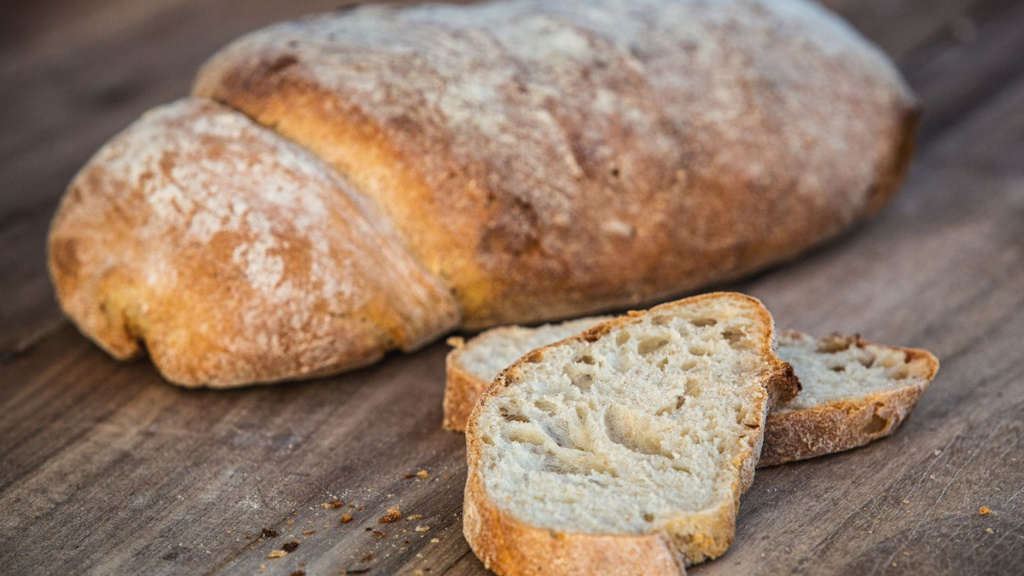
Pão Alentejano | rustic wheat bread
Another style of Portuguese bread often used for toasts and grilled sandwiches would be pão Alentejano, that is, the rustic wheat bread from the Alentejo region. Also known as pão de trigo do Alentejo, that is, wheat bread from the Alentejo, this is a peculiarly shaped loaf which is still traditionally baked inside a wood oven to guarantee its rustic flavor. The history of this bread goes as far back as 2000 years, when the Romans planted the extensive wheat fields which we can, to some extent, still see today across the Alentejo, “Portugal’s cereal barn”. Apart from being consumed as bread would normally be, as a side or in sandwiches, bread in the Alentejo is a central ingredient of the regional Alentejano cuisine. It’s at the base of popular recipes such as soups and savory bread porridges, açordas, pan-fried bread dumplings, migas, and saucy stews served over bread slices, ensopados. If there is one regional bread which not only most Portuguese folks will be able to identify but that is actually valued, pão Alentejano is very probably it.
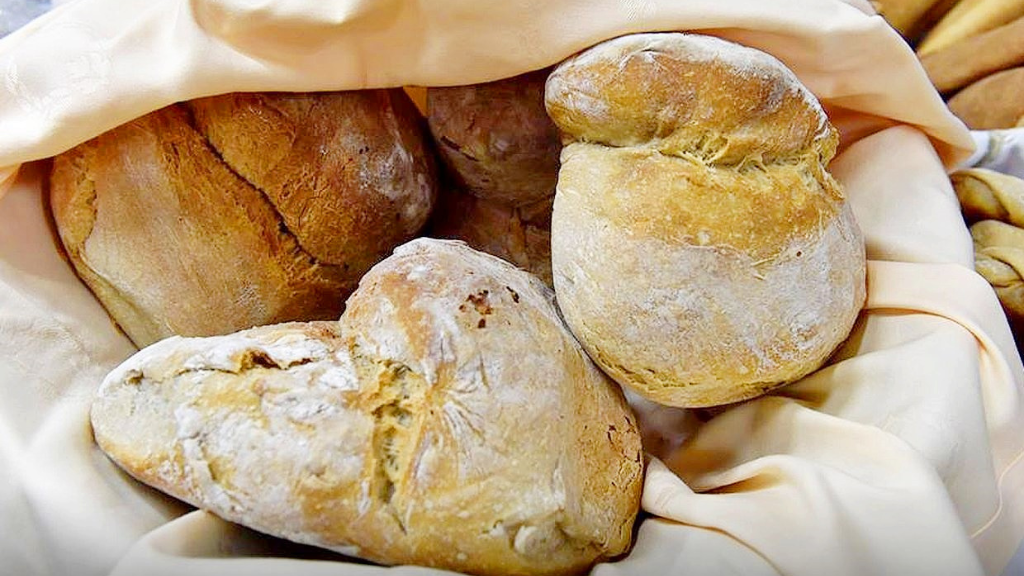
Pão de alfarroba | carob bread
Carob (in Portuguese alfarroba) has gained fame in recent years as a super food of sorts, as an ingredient which was vastly unknown for most of the world but that is now a staple particularly at health food stores. In the southern area of Portugal, in the Algarve, carob has been a key ingredient for a long, long time. Carob trees originated in the Middle East and were brought to Portugal when the Moors established themselves in the country from the 7th century onwards. Ever since that time, the pods of the carob tree where collected and flour was prepared drying and pounding its beans. Portuguese cuisine makes the most use of carob flour in cakes, namely regional delicacies of the Algarve such as bolo de alfarroba, a moist carob cake, and três delícias do Algarve, a confection prepared with almonds, figs and carob. When it comes to bread, the Algarve also makes loaves of pão de alfarroba, which stand out because of their eye-catching deep dark color, as well as for their nutty and slightly sweet taste. As carob has no gluten, pão de alfarroba is always prepared with a small percentage of carob flour mixed with wheat, which at around 85% is actually the main ingredient, and which allows for the bread for leaven. While this is by no means a contemporary recipe, in recent years pão de alfarroba has seen a revival, particularly thanks to health conscious consumers, but also those who are always on the lookout to enjoy different foods. Even though pão de alfarroba was traditionally baked as a big loaf, you will presently easily see individual carob buns even at your regular supermarket.
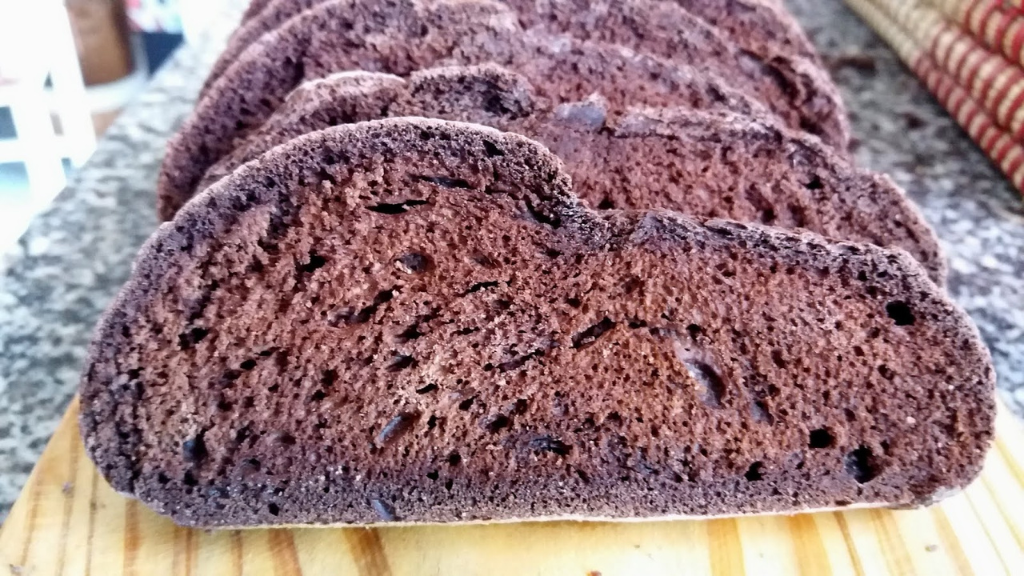
Bolo lêvedo | Azorean muffin
Visiting the Azores is synonymous with exploring the island of S. Miguel. Exploring the island of S. Miguel is synonymous with heading to the popular town of Furnas. And heading to the popular town of Furnas is synonymous with relishing eating fresh bolos lêvedos. Furnas is a parish known for its volcanic activity, which translates not only into relaxing hot springs much sought after by tourists, but also by the possibility of cooking with naturally occurring underground steam. This is where they prepare the uber popular cozido das Furnas, a version of Portuguese meats stew cooked underground for long hours with volcanic steam. The typical Azorean bread bolo lêvedo is also originally from Furnas, but you can find it all over S. Miguel and the other eight Azores islands. In the mainland, you’d have to visit an Azorean specialized store to be able to taste this mildly sweet bread, and this can actually be hard to achieve outside Lisbon, where you can for instance go to Mercearia dos Açores (R. da Madalena 115, 1100-318 Lisbon). Even though bolo lêvedo is often translated as Azorean muffin, this is not a cake, but rather a rich bread whose dough is prepared with milk, butter and eggs. It is reminiscent of an English muffin and thus ideal for breakfast, toasted with a little butter, or panini style with a ham and cheese filling. Just like crumpets, for example, bolos lêvedos aren’t oven baked but, instead, cooked in a pan on the stovetop.
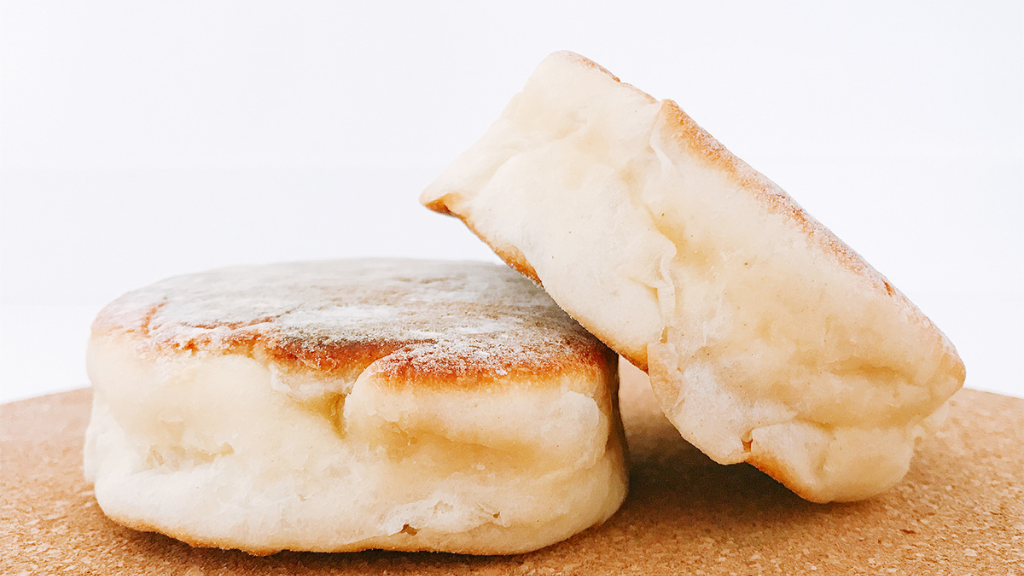
Bolo de milho or bolo de sertã | flat corn bread
When you eat out in the Azores, you won’t usually get bolo lêvedo served as a side to your main meal. As mentioned, this slightly sweet bread would normally be eaten for breakfast or as a mid-afternoon snack with several toppings or sandwich fillings. One of the breads you will indeed get to enjoy with your meal is bolo de sertã, also known as bolo de milho. Most typical in the Azores islands of Pico, S. Jorge and S. Miguel, bolo de sertã is an unleavened flat bread prepared with corn flour, an ingredient which used to thrive in these islands. Now-a-days though, most of the corn you’ll see in plantations as you drive around the islands, is cultivated for cattle food purposes, thus feeding the prospering Azorean meat and dairy industries. Unlike other well-known flat breads from around the world, like pita or chapatis, which are usually individual, bolo de sertã is a large round bread of about 25 cm in diameter, which is sliced in triangles to be served. The more straightforward versions of this distinctive bread are simply prepared with corn flour, water, salt and a little wheat flour to help bind the ingredients. Richer versions can make good use of butter, if not as an ingredient directly added into the dough, at least used to smear the pan (bolo de sertã translates as pan cake) where the bread is cooked. This flat Azorean bread can also be known as bolo de laje or bolo de tijolo, that is, brick cake, referring to the method of cooking which would involve a round brick heated on a trivet with firewood. The commercial bolo de milho you find in supermarkets and bakeries now-a-days is prepared in regular pans but, if you get to meet local Azorean folks, particularly of older generations, you may still get lucky enough to eat an actual brick bread.

Bolo do caco | sweet potato flat bread
While this is one of the most typical breads from the Portuguese archipelago of Madeira, bolo do caco has in the past decade or so been popularized in the mainland, thanks to its use in traditional sandwiches such as pregos and bifanas, prepared by contemporary eateries looking to incorporate a little distinguishing factor to their well-established recipes. Because of its round shape, bolo do caco roughly translates as pot cake (caco specifically stands for a flat basalt stone slab, but now a days a hot griddle like the one we see in the picture above is also commonplace) but, just like bolo lêvedo, it is considered an actual bread and not a cake. In traditional outdoor parties in Madeira, this is the type of bread you get to see being made in front of you, just like, for example, you’d walk past vendors of arepas around Colombian towns. The dough for bolo do caco is usually prepared with wheat flour and mashed sweet potato, a staple ingredient in Madeira, but it’s not unheard of for versions of bolo do caco to be prepared only with flour. One way or another, bolo do caco is soft and spongy on the inside, making it an ideal bread for meat and fish sandwiches, as it has tremendous potential to soak up the juices released. You will also come across bolo do caco in certain versions of Portuguese garlic bread, slightly toasted and slathered with aromatic butter.
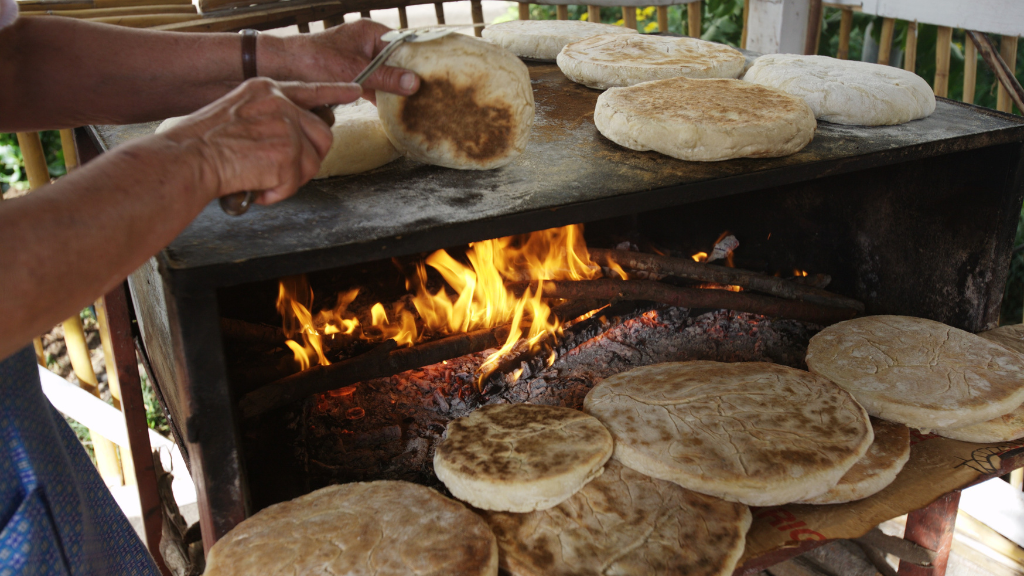
Sweet and stuffed Portuguese breads
Apart from simple breads which are meant to be eaten as an accompaniment to main dishes or used to prepare toasts and sandwiches along with other ingredients, the repertoire of Portuguese breads alo includes a few richer recipes which are either eaten on special occasions or, in the case of breads with fillings, on their own as a complete snack.
Massa sovada | Portuguese sweet bread
If there is one type of Portuguese bread known outside of our borders, massa sovada, which translates as kneaded bread, is probably it. This is thanks to Azorean immigrants who settled in North America, thus popularizing their typical Portuguese sweet bread with their local communities abroad. Even though this is not a staple across mainland Portugal, massa sovada is somehow similar to Easter folar, a sweet brioche-like dough, prepared with milk, eggs, butter (or margarine) and sugar. Folks in the United States may be familiar with the flavor and consistency of massa sovada, as this is the recipe behind the popular Hawaiian rolls, a Hawaii adaptation which came about around the time the Portuguese islanders started settling in the American archipelago in the late 1800s. In the Azores, massa sovada is also known as pão doce (that is, sweet bread) and it can be a part of a local breadbasket, but it can also be the main bread as a side to popular festive dishes like sopas do Espírito Santo, a meat and broth dish prepared specifically during the Pentecost feast. When you enjoy this savory meaty dish, the soft and moderately sweet massa sovada serves as a great contrast on the palate.
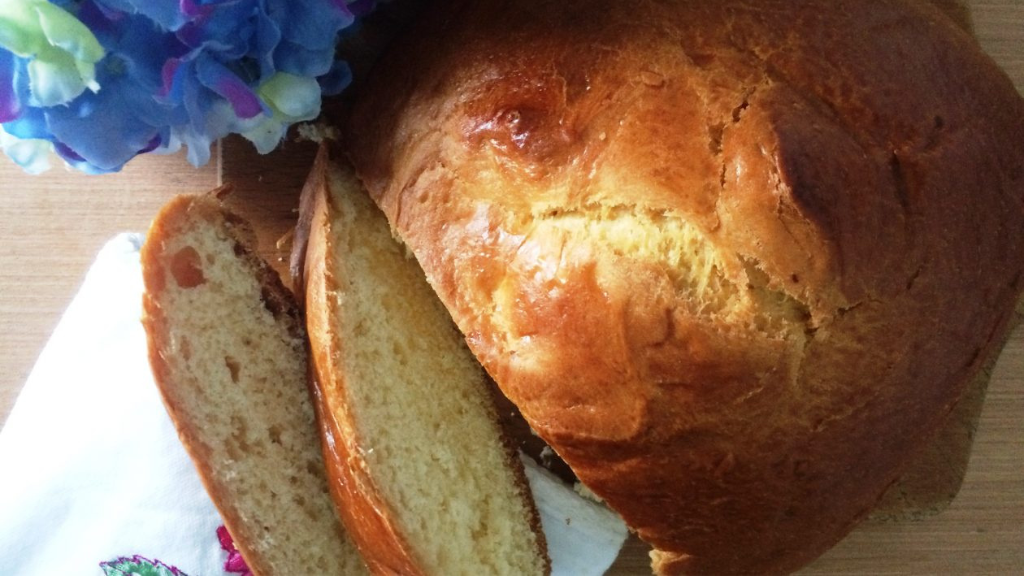
Folar de carnes | smoked meats breads
Folar is a word that, in Portuguese, can make reference to different types of baked goods. For most people, when you say folar on its own, you’d be referring to the sweet Easter bread, folar da Páscoa or folar de ovos, reminiscent of a brioche with aromatics like cinnamon and/or fennel. Folar de carnes, though, stands for a stuffed bread with assorted cured and smoked meats, which also features a mildly sweet dough that contrasts beautifully with the strong flavored fillings. Folar de carnes is generally synonymous with the region of Trás-os-Montes, but there are actually several regional variations of this recipe which is mostly enjoyed during festive occasions. Folar de Valpaços has PGI (Protected Geographical Indication) status, and thus its production is circumscribed to the geographical area of Valpaços, while its method of making is also supposed to follow certain rules. Apart from using margarine and/or pork lard, the dough of folar de Valpaços also makes use of PDO Trás-os-Montes extra-virgin olive oil for a richer taste and moist crumb. It is stuffed with meats like pork belly, Portuguese smoke-cured pork sausages salpicão and linguiça, and pork shoulder. Every year around April, the town of Valpaços hosts Feira do Folar de Valpaços, a food fair dedicated to this speciality. Rivaling the popularity of folar de Valpaços, we have folar de Chaves, which is a very similar recipe, but in this case prepared in the city of Chaves. Either of these meats stuffed breads can also go by the name folar transmontano, bola de carne transmonstana or, as it often happens outside Trás-os-Montes itself but still within the north of the country, as bôla de carnes.
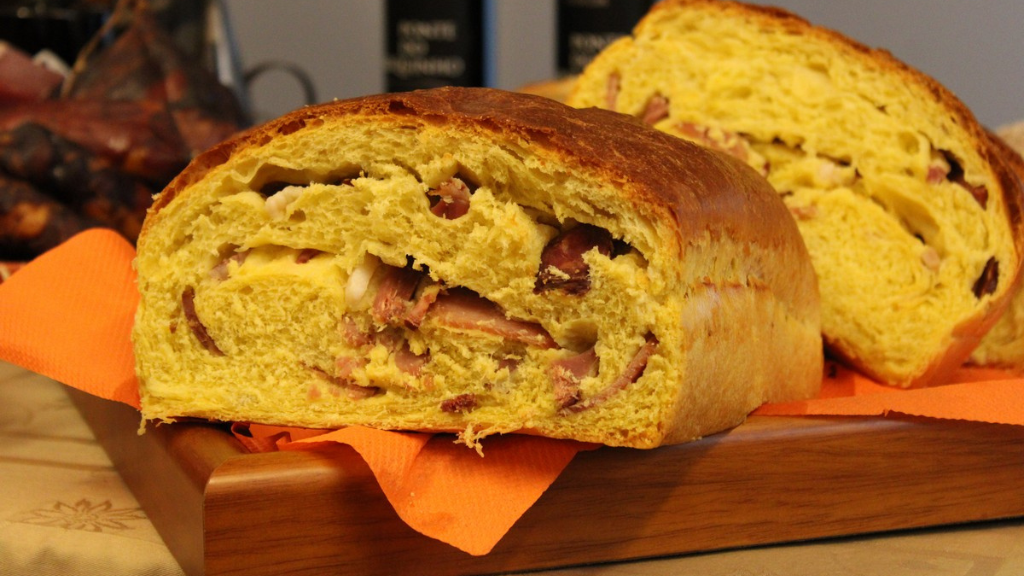
Pão com chouriço | bread with chorizo
If you ever find yourself in Lisbon, with a drink too much in the late night or early morning hours, know that you can always rely on chorizo stuffed bread to soak up the alcohol. In Lisbon, particularly along Av. 24 de Julho, downtown, there are eateries such as A Merendeira (Av. 24 de Julho 54, 1200-657 Lisbon), which specialize in this freshly baked bread, and which are open almost 24/7. Night or day, pão com chouriço is a Portuguese savory baked good you ought to find in most of our cafés and pastelerias. It consists of a white roll which is stuffed and baked with thin slices of Portuguese chouriço inside. The paprika infused smoked pork meat drips a little fat on the dough, making it very flavorful and satisfying. If you enjoy yourself during one of our outdoor festivities, such as St. Anthony’s festival in Lisbon, St. John’s in Porto, or other popular festivities with folksy ambiance which happen all over Portugal particularly during the summer months, chances are you’ll get to try pão com chouriço, which is usually baked on the spot, inside portable wood ovens, responsible for filling the air with an irresistible smell bound to make party-goers hungry at some point.

Now that you are well acquainted with the regional breads of Portugal, we invite you to visit some of the best artisanal bakeries in Lisbon. May your travels around Portugal be fun, tasty and satisfying, and may you share some of your delicious photos and findings with us via Instagram too: @tasteoflisboa #tasteoflisboa
Feed your curiosity on Portuguese food culture:
The best artisanal bakeries in Lisbon
What do the Portuguese eat for breakfast?
10 ways to feel like a local in Lisbon
Day trips from Lisbon that we locals also enjoy
Real people, real food. Come with us to where the locals go.
Signup for our natively curated food & cultural experiences.
Follow us for more at Instagram, Twitter e Youtube
